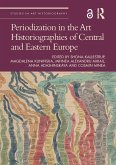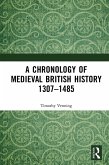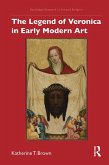This volume critically investigates how art historians writing about Central and Eastern Europe in the late nineteenth and early twentieth centuries engaged with periodization.
At the heart of much of their writing lay the ideological project of nation-building. Hence discourses around periodization - such as the mythicizing of certain periods, the invention of historical continuity and the assertion of national specificity - contributed strongly to identity construction. Central to the book's approach is a transnational exploration of how the art histories of the region not only interacted with established Western periodizations but also resonated and 'entangled' with each other. In their efforts to develop more sympathetic frameworks that refined, ignored or hybridized Western models, they sought to overcome the centre-periphery paradigm which equated distance from the centre with temporal belatedness and artistic backwardness. The book thus demonstrates that the concept of periodization is far from neutral or strictly descriptive, and that its use in art history needs to be reconsidered.
Bringing together a broad range of scholars from different European institutions, the volume offers a unique new perspective on Central and Eastern European art historiography. It will be of interest to scholars working in art history, historiography and European studies.
At the heart of much of their writing lay the ideological project of nation-building. Hence discourses around periodization - such as the mythicizing of certain periods, the invention of historical continuity and the assertion of national specificity - contributed strongly to identity construction. Central to the book's approach is a transnational exploration of how the art histories of the region not only interacted with established Western periodizations but also resonated and 'entangled' with each other. In their efforts to develop more sympathetic frameworks that refined, ignored or hybridized Western models, they sought to overcome the centre-periphery paradigm which equated distance from the centre with temporal belatedness and artistic backwardness. The book thus demonstrates that the concept of periodization is far from neutral or strictly descriptive, and that its use in art history needs to be reconsidered.
Bringing together a broad range of scholars from different European institutions, the volume offers a unique new perspective on Central and Eastern European art historiography. It will be of interest to scholars working in art history, historiography and European studies.
Dieser Download kann aus rechtlichen Gründen nur mit Rechnungsadresse in A, B, BG, CY, CZ, D, DK, EW, E, FIN, F, GR, HR, H, IRL, I, LT, L, LR, M, NL, PL, P, R, S, SLO, SK ausgeliefert werden.









